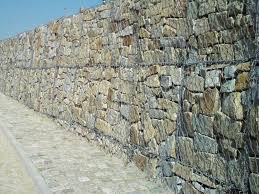Gabions, often seen in erosion control and landscape architecture, are increasingly finding applications in bridge construction because of their flexibility in terms of cost-efficiency, environmental, and advantages. Understanding the way gabions (gabiony) are utilized in this regard will provide insight into their advantages as well as practical considerations.
Gabions are wire mesh containers filled with stones, rocks, or other materials. They are traditionally used for walls for retaining as well as erosion control and riverbank stabilization. When it comes to bridge construction, gabions are employed principally for their ability to build sturdy, long-lasting structures that blend with nature.
One of the most common uses for gabions for bridge building is building piers and abutments. Gabion walls offer several benefits they offer, such as the flexibility of design, easy installation, and low maintenance requirements. They are able to adapt to uneven or irregular terrain and are particularly effective in difficult locations where traditional methods of construction might be unsuitable.
The gabions’ porous structure allows for natural drainage, which reduces hydrostatic pressure and potential water damage. This is especially beneficial in areas with heavy rainfall or where groundwater levels fluctuate. By facilitating better drainage, gabions contribute to the durability and strength of the bridge’s structure.
In addition, gabions provide environmental benefits. The gaps within gabion baskets are a good place to encourage the growth of plants, which helps integrate the structure into the natural environment. This green strategy is not just enhancing the aesthetic value, but can also provide the habitat needed by wildlife.
While gabions provide numerous advantages however, they do not come without challenges. The quality and dimension that the material used to fill them, the shape for the baskets and the proper techniques for installation are crucial to ensuring their durability and effectiveness. Regular inspection and maintenance are also essential to address any issues that could arise, such as corrosion or damage of the mesh.
In short, gabions are a valuable tool in bridge construction providing flexibility, strength and environmental advantages. The use of gabions in the construction of bridges, piers, and abutments offers a robust solution that harmonizes with natural landscapes while delivering real-world performance benefits. As technology and materials evolve and develop, gabions are likely to continue to play an important part in ensuring sustainable and durable infrastructure development.


